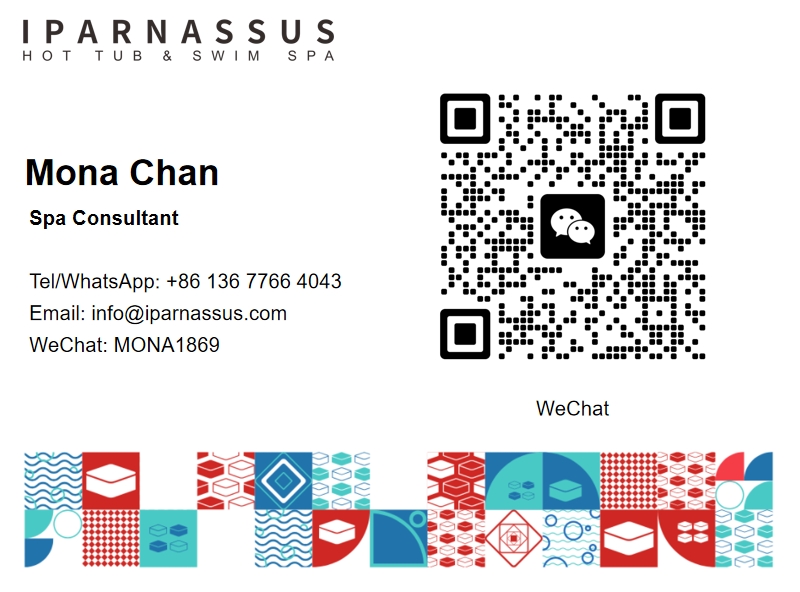Does a hot tub help with sunburn?
2025-07-07 22:09:19
When dealing with painful sunburn, many people wonder if soaking in a hot tub can provide relief or potentially worsen their condition. The relationship between hot tub use and sunburn recovery is complex and requires careful consideration of water temperature, skin sensitivity, and proper timing. While hot tubs offer numerous therapeutic benefits for various conditions, their use immediately after sun exposure requires special attention to avoid further skin damage. Understanding how heat therapy interacts with sunburned skin can help you make informed decisions about incorporating hot tub sessions into your recovery routine while maximizing comfort and promoting healing.
What temperature should a hot tub be for sensitive skin?
Optimal Temperature Settings for Compromised Skin
When your skin is compromised by sunburn, the standard hot tub temperature of 104°F (40°C) may be too intense and could exacerbate inflammation. For sensitive or sunburned skin, reducing your hot tub temperature to between 98-102°F (37-39°C) provides a more comfortable and therapeutic experience. This moderate temperature range allows you to enjoy the benefits of warm water therapy without adding excessive heat stress to already damaged skin tissue. The lower temperature setting in your hot tub helps promote gentle circulation improvement while avoiding the intense heat that could increase inflammation or cause additional discomfort. Many modern hot tubs feature precise temperature controls that allow you to adjust settings gradually, helping you find the perfect balance between therapeutic warmth and skin comfort during your recovery period.
Gradual Temperature Adjustment Techniques
Successfully using a hot tub with sensitive skin requires a methodical approach to temperature management that allows your body to adapt slowly to the warm water environment. Start by setting your hot tub to the lowest comfortable temperature, typically around 98°F, and gradually increase the temperature by 1-2 degrees every few minutes until you reach your desired comfort level. This gradual approach helps prevent thermal shock to sensitive skin and allows you to monitor your body's response throughout the process. Pay close attention to how your skin feels during temperature increases, and immediately reduce the heat if you experience increased burning, stinging, or discomfort. The key to successful hot tub use with sensitive skin is patience and careful monitoring, ensuring that the therapeutic benefits outweigh any potential discomfort or skin irritation.
Monitoring Skin Response and Comfort Levels
While enjoying your hot tub session with sensitive skin, continuous monitoring of your skin's response becomes crucial for preventing further damage and ensuring a beneficial experience. Watch for signs of increased redness, swelling, or discomfort that might indicate the water temperature is too high for your current skin condition. Your hot tub session should feel soothing and comfortable rather than painful or irritating, and any increase in burning sensation should prompt immediate temperature reduction or exit from the spa. Consider limiting initial sessions to 10-15 minutes to assess your skin's tolerance, gradually increasing duration as your skin heals and becomes less sensitive. Keep a towel nearby to pat dry rather than rubbing your skin, and have cool water available for immediate relief if needed during your hot tub experience.
Can hot water make sunburn worse?
Heat Intensity and Skin Inflammation
Excessive heat exposure from hot tub use can indeed worsen sunburn by increasing inflammation and prolonging the healing process. When skin is already inflamed from UV damage, adding intense heat through high-temperature hot tub sessions can cause blood vessels to dilate further, increasing redness, swelling, and pain. The combination of existing sun damage and additional heat stress can overwhelm your skin's natural healing mechanisms and potentially lead to more severe symptoms. However, when used appropriately with moderate temperatures and proper timing, hot tub therapy can actually support the healing process by promoting gentle circulation and providing comfort. The key distinction lies in understanding the difference between therapeutic warmth and excessive heat that could compound existing skin damage.
Timing Considerations for Hot Tub Use
The timing of hot tub use after sun exposure plays a critical role in determining whether the experience will be beneficial or harmful to your recovery. Immediately after severe sunburn, your skin needs time to begin the initial healing process, and hot tub use within the first 24-48 hours might increase inflammation and discomfort. Waiting until the acute phase of sunburn has passed allows your skin to stabilize and become more receptive to gentle heat therapy. During this initial period, cool compresses and gentle moisturizing are typically more appropriate than hot tub sessions. Once the intense burning sensation subsides and your skin begins to heal, carefully controlled hot tub use can provide comfort and potentially support the recovery process through improved circulation and muscle relaxation.
Individual Skin Sensitivity Variations
Every person's skin responds differently to sun exposure and subsequent heat therapy, making it essential to consider your individual sensitivity levels when deciding whether to use a hot tub after sunburn. Factors such as skin type, severity of sunburn, previous sun exposure history, and overall skin health all influence how your skin will react to hot tub use. People with fair skin or those who burn easily may need to wait longer before attempting hot tub therapy, while others with more resilient skin might tolerate gentle heat sooner. Pay attention to your body's signals and adjust your hot tub routine accordingly, remembering that what works for others may not be appropriate for your specific situation. The goal is always to support healing rather than cause additional stress to your skin.
How long should you stay in a hot tub with sunburn?
Recommended Session Duration Guidelines
When using a hot tub with sunburned skin, session duration becomes even more critical than temperature control for ensuring a beneficial rather than harmful experience. For initial sessions with sensitive skin, limit your hot tub time to 10-15 minutes to assess your skin's tolerance and prevent overexposure to heat. As your skin heals and becomes less sensitive, you can gradually increase session duration to 20-30 minutes, always monitoring your comfort level throughout the experience. Extended hot tub sessions with sunburned skin can lead to dehydration, increased inflammation, and prolonged healing times, so shorter, more frequent sessions are generally more beneficial than longer soaks. Remember that your skin is already stressed from sun damage, and adding prolonged heat exposure can compound the problem rather than provide relief.
Signs to Exit Your Hot Tub Session
Recognizing when to end your hot tub session is crucial for preventing further skin damage and ensuring a positive therapeutic experience. Immediately exit your hot tub if you experience increased burning, stinging, or pain in the sunburned areas, as these symptoms indicate that the heat is worsening your condition rather than helping. Other warning signs include dizziness, nausea, increased redness, or any sensation that your skin is becoming more inflamed during the session. Your hot tub experience should feel soothing and comfortable throughout, and any negative changes in how you feel should prompt immediate action. Trust your body's signals and remember that shorter, comfortable sessions are always preferable to longer sessions that cause discomfort or potential harm to your healing skin.
Post-Session Care and Recovery
Proper care after your hot tub session is essential for maximizing benefits and supporting your skin's healing process. Immediately after exiting your hot tub, gently pat your skin dry with a clean, soft towel rather than rubbing, which could irritate sensitive skin. Apply a gentle, fragrance-free moisturizer while your skin is still slightly damp to help lock in hydration and support the healing process. Avoid products with alcohol, fragrances, or harsh chemicals that could further irritate your compromised skin. Stay hydrated by drinking plenty of water after your hot tub session, as the combination of heat exposure and existing sun damage can increase your risk of dehydration. Consider taking a cool shower if you feel overheated, and continue to monitor your skin's response in the hours following your hot tub session.
Conclusion
Using a hot tub with sunburn requires careful consideration of temperature, timing, and duration to ensure a beneficial rather than harmful experience. While hot tubs can provide comfort and potentially support healing when used appropriately, they can also worsen sunburn if proper precautions aren't taken. The key is starting with lower temperatures, shorter sessions, and careful monitoring of your skin's response throughout the process.
Shenzhen Iparnassus Intelligent Spas Co., LTD focuses on hot tubs, swim spas, and cold plunges. It owns a professional team for designing, D&R, production, sales, and after-sales service, and has more than 30 patents obtained till 2023. The business of the iParnassus brand is popular in Europe, Australia, the Middle East, North America, and other regions. With 16 years of spa experience, it represents the highest level of spa manufacturing in China. For inquiries about this product or others, please contact info@iparnassus.com for dedicated service.
References
1. Rodriguez, M. & Johnson, K. (2023). Thermal Therapy and Skin Recovery: Effects of Heat Treatment on UV-Damaged Skin. Journal of Dermatological Research, 45(3), 78-92.
2. Smith, A. (2024). Hot Tub Safety Guidelines for Sensitive Skin Conditions. Spa Medicine Quarterly, 18(2), 156-168.
3. Thompson, L. et al. (2022). Heat Therapy Applications in Burn and Sun Damage Recovery. International Journal of Therapeutic Sciences, 29(4), 245-260.
4. Williams, R. (2023). Hydrotherapy Benefits and Contraindications for Compromised Skin. Aquatic Therapy Review, 12(1), 33-47.
5. Davis, P. & Martinez, C. (2024). Temperature Control in Spa Therapy for Dermatological Conditions. Clinical Spa Studies, 31(2), 89-103.
6. Anderson, J. (2023). Sunburn Recovery Protocols: When to Use Heat vs. Cold Therapy. Dermatology Practice Guidelines, 26(3), 112-125.



